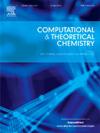Rational design and DFT-based study of non-fullerene acceptors for high-performance organic solar cells: End-cap and Core modifications for enhanced charge transfer
IF 3
3区 化学
Q3 CHEMISTRY, PHYSICAL
引用次数: 0
Abstract
In this article, we reported the 64 newly designed non-fullerene acceptors (NFAs) using density functional theory (DFT) approaches combined with both central core and end-cap modification. We screened out five promising molecules among 64 molecules using four specific criteria and their structural as well as optoelectronic attributes were calculated. Using DFT techniques, we thoroughly examined the optical, electrical, and excited state characteristics such as energy gap, maximum absorption, excitation energy (Ex), and oscillator strength to evaluate the effects of various end-cap groups on different core architectures. Furthermore, we paired the most promising NFAs with the P3HT polymer donor to generate donor-acceptor interfaces, and we examined the open circuit voltage (Voc) and rate of charge transfer (CT) at these interfaces. The conclusions offer insightful advice and useful design guidelines for high-performance NFAs that have the potential to greatly increase solar devices' efficiency.

高性能有机太阳能电池非富勒烯受体的合理设计和基于dft的研究:增强电荷转移的端帽和核心修饰
在本文中,我们报道了64个新设计的非富勒烯受体(nfa),采用密度泛函理论(DFT)方法结合中心核和端帽修饰。我们从64个分子中筛选出了5个有潜力的分子,并计算了它们的结构和光电子属性。利用DFT技术,我们彻底检查了光学、电学和激发态特性,如能隙、最大吸收、激发能(Ex)和振荡器强度,以评估不同端帽组对不同核心结构的影响。此外,我们将最有希望的nfa与P3HT聚合物供体配对以生成供体-受体界面,并检测了这些界面上的开路电压(Voc)和电荷转移速率(CT)。这些结论为高性能nfa提供了深刻的建议和有用的设计指南,这些nfa有可能大大提高太阳能设备的效率。
本文章由计算机程序翻译,如有差异,请以英文原文为准。
求助全文
约1分钟内获得全文
求助全文
来源期刊

Computational and Theoretical Chemistry
CHEMISTRY, PHYSICAL-
CiteScore
4.20
自引率
10.70%
发文量
331
审稿时长
31 days
期刊介绍:
Computational and Theoretical Chemistry publishes high quality, original reports of significance in computational and theoretical chemistry including those that deal with problems of structure, properties, energetics, weak interactions, reaction mechanisms, catalysis, and reaction rates involving atoms, molecules, clusters, surfaces, and bulk matter.
 求助内容:
求助内容: 应助结果提醒方式:
应助结果提醒方式:


